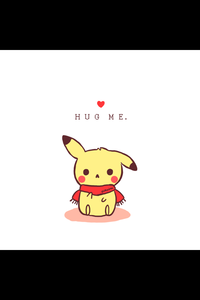16387368
Photosynthesis IB Biology
Beschreibung
Keine Merkmale angegeben
Zusammenfassung der Ressource
Frage 1
Frage
What is needed in photosynthesis to convert carbon dioxide into organic molecules?
Antworten
-
Light and hydrogen from the splitting of water
-
ATP and hydrogen from the splitting of water
-
ATP and oxygen from the splitting of water
-
Light and oxygen from the splitting of water
Frage 2
Frage
How is the proton gradient generated in chloroplasts during photosynthesis?
Antworten
-
Flow of electrons from carrier to carrier in the thylakoid membrane causes pumping of proteins across the thylakoid membrane.
-
Light causes protons to flow through protein channels in the thylakoid membrane
-
Light splits water molecules in the stroma, causing the release of protons
-
Protons are pumped across the thylakoid membrane using energy from ATP
Frage 3
Frage
The energy lost from electrons during the electron transport chain drives which of the following processes?
Antworten
-
regeneration of RuBP
-
carbon fixation
-
chemiosmosis
-
photolysis
Frage 4
Frage
Which of the following statements describes a relationship between photosystem 2 and photosystem 1?
Antworten
-
Photosystem 2 produces ATP and NADPH that are used by photosystem 1
-
Photosystem 1 produces ATP and NADPH that are used by photosystem 2
-
The de-energized electron from photosystem 1 fills the void left by the newly energized electron from photosystem 2
-
The de-energized electron from photosystem 2 fills the void left by the newly energized electron from photosystem 1
Frage 5
Frage
This is the enzyme that catalyzes the transfer of the electron from the ferredoxin (last electron carrier) in the electron transport chain.
Antworten
-
ATP synthase
-
NADP reductase
-
RuBP Catalase (rubisco)
-
glycerate-3-phosphate
Frage 6
Frage
Which of the following identifies the two final products of the light dependent reaction?
Antworten
-
cytochrome complex and ferrodoxin
-
plastoquinone and ferrodoxin
-
NADPH and ATP
-
NADP+ and ADP
Frage 7
Frage
Which of the following is an alternative way to synthesize ATP using energy transferred between photosystems 1 & 2?
Antworten
-
photolysis
-
non-cyclic photophosphorylation
-
cyclic photophosphorylation
-
action spectrum
Frage 8
Frage
Complete the sequence describing the reactions in the Calvin Cycle
[blank_start]RuBP[blank_end] binds to a [blank_start]CO2[blank_end] molecule --> An [blank_start]unstable[blank_end] [blank_start]6[blank_end]-C compound breaks down into [blank_start]two glycerate-3-phosphates[blank_end] --> The [blank_start]glycerate-3-phosphates[blank_end] react with [blank_start]ATP & NADPH[blank_end] to form [blank_start]two triose phosphates[blank_end] --> [blank_start]Two triose phosphates[blank_end] go out of the Calvin Cycle and synthesize [blank_start]glucose[blank_end]
Antworten
-
CO2
-
H2O
-
O2
-
6
-
5
-
ATP & NADPH
-
ATP & NADP+
-
ADP & NADPH
-
ADP & NADP+
-
glucose
-
glycerate-3-phosphates
-
two glycerate-3-phosphates
-
two triose phosphates
-
Two triose phosphates
-
unstable
-
stable
-
RuBP
Möchten Sie mit GoConqr kostenlos Ihre eigenen Quiz erstellen? eigenen Mehr erfahren.

